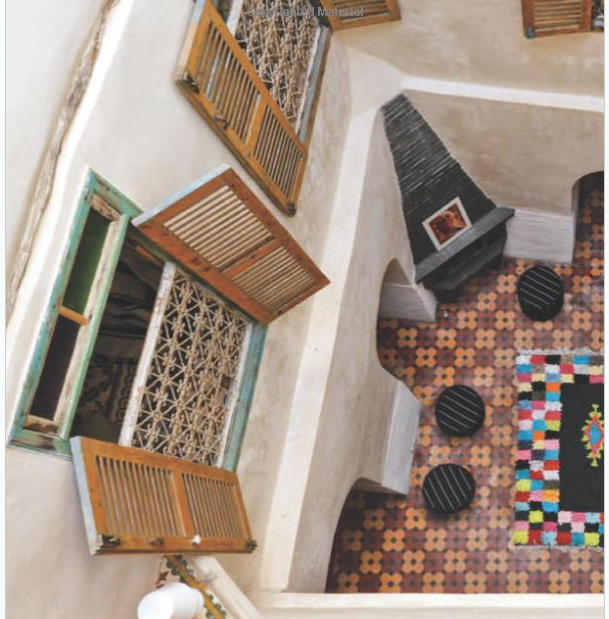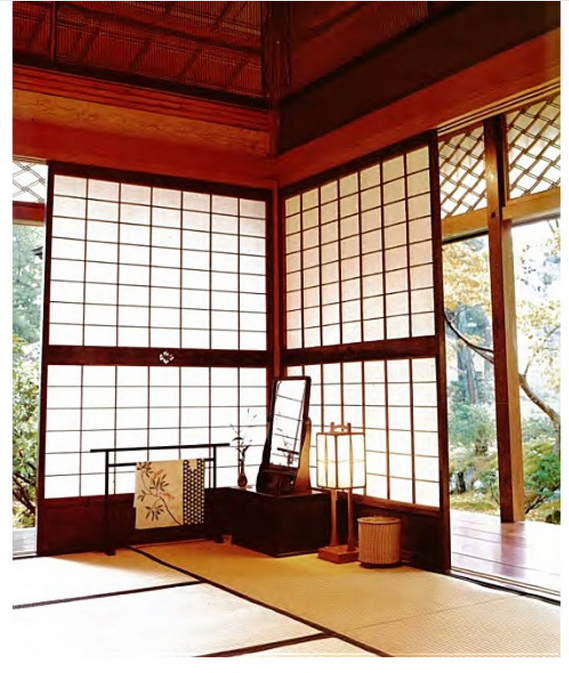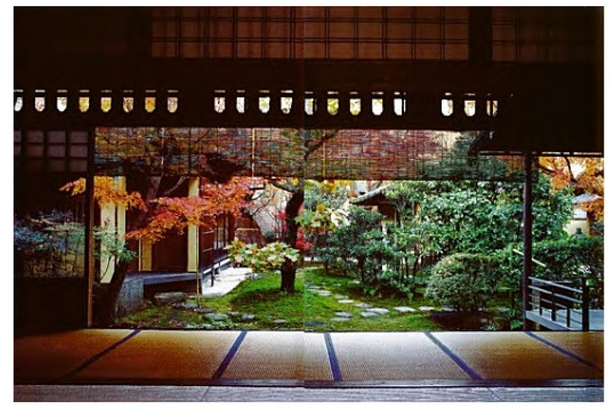It is worth noting that interior design entails various concepts and meanings as it deals with the planning and design of the interior space of the premise creating a solid, harmonious composition. Despite a variety of different aspects of interior design, the two main characteristics of almost any style are functionality and aesthetics. One of the main tasks of interior design is the stylization of the facility taking into account its size, shape, lighting, and other crucial architectural features. From this point of view, the design is associated with construction, repairing, and finishing works, which involves the creation of a comfortable and safe space that corresponds to the purpose of the premise (Higgins 84). From the point of view of interior design as an art, its leading aim is to create an integral image in which all elements will be interconnected and will harmoniously complement each other in terms of colour, geometry, and texture. Moreover, a variety of small parts plays a great role in forming a complete composition. The purpose of this report is to investigate and compare the two contrasting styles that have developed historically, which are Moorish and Japanese interior designs and outline the cultural contexts in which they have evolved.
Key Elements and Cultural Influences in Moorish Interior Design
This style in interior design has emerged under the influence of several cultures simultaneously, such as the Egyptian, Syrian, Indian, and Persian cultures. Islam united the tribes of the Arabs and turned them into a powerful nation while the Muslim culture was influenced by the representations and customs of the conquered peoples and created its own distinctive original style. Moorish style in the interior design appeared in Europe under the influence of eclecticism in the late 19th century (Paul 121). Initially, it was an ethnic Mauritian style, but with its spread to Europe, it has changed sustaining its basic elements (Paul 121). Moorish interior design was especially popular in the second half of the last millennium; however, at present, it is also highly appreciated and requested by designers and architects.
From the architectural point of view, this style is exquisite and original. Columns decorated with ceramic mosaic, carvings on the walls, ornaments, and sharp domes, can indicate it. The interior decoration resembles a marquee with thin walls, sharp edges, and needle columns. It is significant that one of the characteristic features of the Moorish style is a carving or ornament with geometric or plant motifs that have a characteristic Arabic motive (Howell 77). The main feature of the Moorish style is a feeling of luxury and abundance, which are created using the variety of bright colours, silk and velvet fabrics. The philosophy of this approach lies in the idea that the suction of colours and textures symbolises the material well-being and values advocated by the society. Apart from that, different colour schemes and combinations contribute greatly to the establishment of this style; for instance, the yellow colour which personified pacification, orange symbolising joy, and red emphasising the importance of love have been widely used in the design (Howell 77).
In general, the main features of this style include such aspects as arcades, columns, and arches, as well as facing of the columns with ceramic tiles. The decorative aspect focuses on chiselled elements such as grids and intricate arbours in the form of a ligature (Broug 54). Thus, the wall carving, the lining of the columns, and the ornate ornament are characteristic features of this style, and they can be traced in the interior design notwithstanding the epoch of the premise. Image 1 exhibits a contemporary house in the Moorish style that has typical elements of this design.

In addition, it is necessary to emphasise such aspect of the interior as artistic weaving and carpets, which have become an expression of decorative specifics of Moorish interior design (Broug 54). Carpets in this style always have a rare beauty and exhibit complex ornaments that create a unique harmony with all the other details of the space. Carpets from Iran, Turkmenistan, and Central Asia are appreciated highly. They convey the atmosphere of the Moorish style and stress its sophistication.
Interestingly, furniture in this style has always played a minor role (complementary aspect). Chests with forged lining and niches in the walls that are covered with wooden doors could act as lockers for storing items. Tables in the Moorish style should be low with a characteristic hexagonal or octagonal shape and should be covered with artistic carvings. Sofas usually have no backrest and armrests, as numerous pillows perform their function. It is significant to note that, earlier, the furniture (for instance, sofas) was covered with special leather with embossing, and, at modernity, materials that are adjacent in quality and appearance are used. Some researchers emphasise that the Muslim ornament, and its intricacies and repetitive patterns showed the mathematical mindset of peoples initiating this style in interior design (Gharipour and Schick 334). In general, the Moorish style is rich and quite heterogeneous due to the fact that it was influenced by many cultures that made their adjustments to it over time.
Key Elements and Cultural Influences in Japanese Interior Design
Japanese interior design differs from Moorish one in a number of ways. In general, the Japanese design is simple, elegant, and functional. Initially, the formation of this interior design was influenced by the setting in which it evolved due to the fact that the traditional Japanese house had no walls and the space was divided into functional zones (Higgins 86). The culture of this country was based on the idea that everything superfluous was ugly; therefore, the emptiness had to highlight the elegance of the premises in consequence of which it was believed that the Japanese style was minimalistic in the first place. Special niches in the walls emphasised the flatness of the floor and ceiling, and the colour schemes, fabrics, materials, and decoration were in harmony with nature. Thus, unlike the first interior design style, which is characterised by floridity and an abundance of details, Japanese interior design refers to natural beauty. The interior palette consists of warm and calm colours and materials, among which the most preferred ones are wooden materials, bamboo, rice paper, straw and so on.
The most significant detail of the composition in this style is lighting, in particular, soft light should highlight the few elements of the interior and emphasise their importance. The main principle of Japanese interior design is the emphasis on geometric order in contrast to the previous style. All the decisions in the interior are based on one basic colour or texture. In the case of the Moorish design, complex or mixed combinations are highly preferable, while the Japanese style advocates for simplicity and strength. Black colour is often used to stress the essence and form. In addition, Japanese design uses sliding doors (shown in Image 2) that emphasise the principle of horizontal interior spaces. The ease and openness of buildings are due to the climate and frequent natural disasters that strike the territory.

It is crucial that the constructions made in the traditional Japanese style have a special foundation. To be more precise, the constructions are designed in such a way that the building can be dismantled and moved to a new location without destroying or damaging the materials (Higgins 84). This approach to architecture and design is explained by the conditions of living and the values promoted by the nation. In addition, special attention is paid to unity with nature; for instance, projecting canopies over windows with curved cornices make it possible to protect the room from oblique rainfalls and give a permanent shade for a comfortable stay.
It is also worth noting that the use of metals in Japanese design was rather modest due to the fact that it was practically never used to construct a building. Since Japan did not have rich metal-containing resources, and the climate contributed to the rapid destruction of such structures, the emphasis was made on the beauty and functionality of wood. Image 3 displays that all crucial elements of the building are made of wood. Nevertheless, such fidelity to tradition began to weaken after the 1870s, and the country began to borrow the ideas and approaches of European and American designers. After the World War II, Japanese interior design resorted to the wider use of new materials, and the architects began to build steel and concrete high-rise buildings.

Debate over Moorish Style
It is crucial to note that there are debates about the context with respect to the emergence of the Moorish style. Many experts in the field emphasise the retrospective character of this trend in eclectic architecture. Many researchers argue that this trend has reinterpreted or imitated the Spanish, Portuguese, Islamic medieval architecture, in particular, Mudejar (Nirenberg 112). Nevertheless, most scholars tend to assume that this style originated in Europe at the end of the 19th century, but initially, it emerged in the northern part of Africa, which evidences its ethnic origin. However, there is an erroneous belief that the Moorish interior design originated from the peoples inhabiting this part of Africa. This style is heterogeneous due to the fact that it absorbed the monuments of Islamic Spain and other territories. Moreover, the Moorish style is a synthesis of several artistic traditions, for instance, the Arab Caliphate and the Visigoths.
It is worthy of noting that the social context also influenced the characteristic features in this style. In particular, secular buildings used lancet, horseshoe-shaped arches, domes, and cornices with complex wall carvings. The columns were tiled with mosaic, while coloured stained glass and marble were used to complement the ornament (Jones 334). Nonetheless, it is essential to emphasise that, irrespective of class or privilege, images of living beings were forbidden since the Muslim faith required the refusal from such allusions. For this reason, people sought to use fantasy ornaments with geometric and plant motifs and created unusual artefacts based on the Arabic font.
Thus, despite the existing debate around the origin of this style, the majority of researchers confirm a mixture of Byzantine, Egyptian, and Roman aspects that lie in the emergence of this style. Despite the emphasis on the European origin of the Moorish style, it arose under the influence of both the culture and tradition of North Africa and it borrowed multiple concepts from Arab culture and reflected the values characteristic of this tradition (Jones 123). In this regard, Moorish interior design can be rightly called a neo-style, which reflects the way of living of many peoples and has incorporated the traditions of several cultures.
Debate over Japanese Style
Unlike the debate around the Moorish interior design, the disputes about the Japanese style have a completely opposite character, and they are not related to the origin and roots of the style, but to its evolution. It is worth noting that the Japanese interior design has a centuries-old culture, and its aesthetic refinement could be perceived throughout centuries. Initially and until modernity, in this direction, such concepts as functionality and purity of forms were strictly followed, which was connected with the location and way of living of the population. Japan is a volcanic country located on the island that is why it has always adhered to the principle of considerate land use; therefore, the entire interior is built in accordance with the reasonable organisation of space (Higgins 87). In addition, the artistic culture has always permeated the interior design focusing on the most important aspects.
Further on, traditions have always influenced the formation of modern Japanese design, however, during the past century, it has received both praise and criticism, which was due to the particular economic conditions and industrialisation processes that emerged in the country in the post-war period (Mehta and Tada 179). In the 1960s, the industrial boom caused high competitiveness of firms, which started to resort actively to the services of designers, thus, the number of professionals began to grow dramatically. Importantly, they were not sufficiently qualified as many of them were artists and did not have the knowledge in engineering. Consequently, the development of design proceeded in complex relationships of creative, organisational, and economic concepts. In particular, many forms were adopted from America and Europe, and they were combined with traditional aesthetic ideas.
At this point, it is significant to note that the process of mastering the foreign experience in the context of Japanese interior design has been complex and inconsistent, which has faced heavy criticism from the side of experts. To be more precise, critics accused the Japanese design of copying Western forms, which meant that the interior elements were not borrowed, but copied without any changes in the details (Mehta and Tada 197). Consequently, the main contradiction inherent in that epoch was due to the fact that industrial design, which developed under the influence of the West, was imposed artificially causing contradiction with the national artistic thought. Thus, Japanese interior design was accused of Americanization.
Therefore, the transformations in the Japanese interior design during the 19-20 centuries were eclectic and episodic, which had a negative effect on the harmony of elements and undermined the Japanese tradition and continuity preserved for centuries. It was due to the fact that any Western approaches, both advanced and outdated, were embedded in the design without adaptation. Nevertheless, with the development of the economy and the state, the design became more elitist, which served as a good platform for the development of national design as well (Mehta and Tada 27). Consequently, the character of the progressive development of this trend in design has shifted from chaotic to consistent and flexible, which enabled adjusting the modern foreign forms and materials, as well as methods of work, to the aesthetically meaningful requirements of traditional Japanese design.
Similarities Between Two Contrasting Interior Designs
Despite the intense contrast between the two styles and the debate that existed around them, it is worth noting that they have a number of similarities that unite them. In general, at present, the Japanese and the Moorish interior designs, as well as these cultures, are gaining greater popularity, which is due to the growing interest in unique cultures and traditions that are harmoniously compiled with modern trends and progress. Both styles considered in the report are unique, full of colour and shape, which evidences a clear character in the design (Wood and Edworthy 101). One of their main common features is the choice of colour. Japanese interior design, as well as Moorish, focuses on a natural palette of colours, which allows stressing the texture of surfaces. Moreover, the eclectic nature inherent in these two styles makes it possible to create an extraordinary interior.
In addition, it should be noted that the main similarity of the styles lies in the artful combination of western and eastern implications in the design, despite the fact that the skilfulness in this combination was achieved following drastically different paths. In particular, the Moorish interior design achieved it due to its origin, while the Japanese – due to the conditions of development. Among other things, both contrasting interiors make a particular emphasis on the formation of space, the correlation of classical forms and ethnic colour, which does not affect negatively the quality of the design (Wood and Edworthy 202). In addition, both styles are eco-friendly since the choice is made between natural materials and pallets.
Conclusion
Thus, it can be concluded that neither Moorish nor Japanese interior design can be confused with any other style, as they are unique and reserved. In the case of the first style, the premise will resemble a tent and will be full of ornaments, columns, and Arabic script. The Moorish style is a synthesis of several cultural traditions, which allowed creating a new distinct design. Apart from the influence of Islam, the trends of Egypt, Persia, and other nationalities can be clearly traced in this style. In its turn, the Japanese interior design is minimalistic. It seeks to combine harmoniously the emptiness and traditions. The main feature of this style is the unity with nature, which is reflected in the choice of colour palette and architectural solutions. This style has a profound philosophy that goes back to ancient times. Nevertheless, preserving the tradition, the Japanese interior design skilfully incorporates the details and the borrowings from Western culture making the interior design more functional to meet the contemporary requirements.
Works Cited
Broug, Eric. Islamic Geometric Design. Thames & Hudson, 2013.
Gharipour, Mohammad, and Irvin Cemil Schick. Calligraphy and Architecture in the Muslim World. Edinburgh University Press, 2013.
Higgins, Ian. Spatial Strategies for Interior Design. Laurence King Publishing, 2015.
Howell, Khristian. Color + Pattern. Rockport Publishers, 2015.
Jones, Lynn. Beginnings of Interior Environments. 11th ed., Pearson, 2013.
Mehta, Geeta, and Kimie Tada. Japan Style. Tuttle Publishing, 2012.
Montague, Maryam. Marrakesh by Design. Artisan, 2012.
Nirenberg, David. Neighboring Faiths. University of Chicago Press, 2014.
Paul, Linda. Casa Bohemia. Rizzoli International Publications, 2015.
Wood, Joanna, and Sarah Edworthy. Joanna Wood: Interiors for Living. Prestel Publishing, 2015.